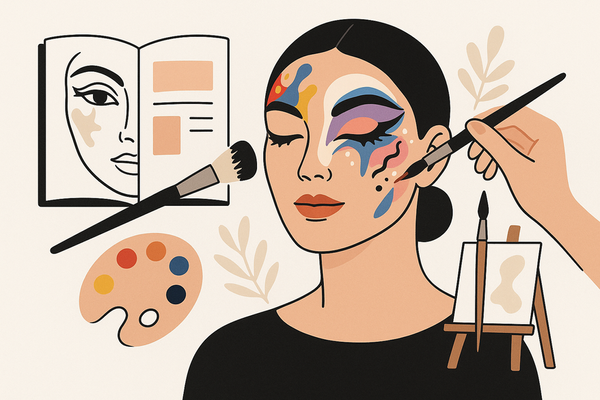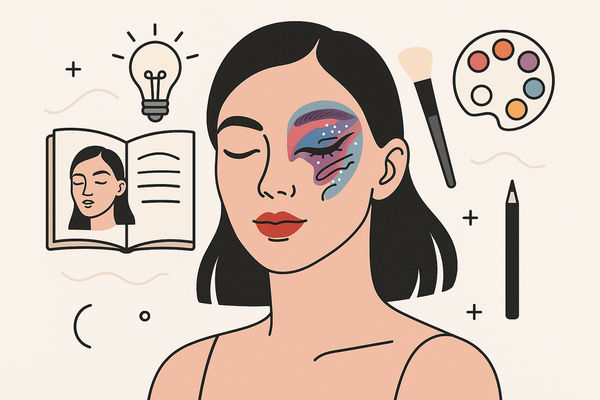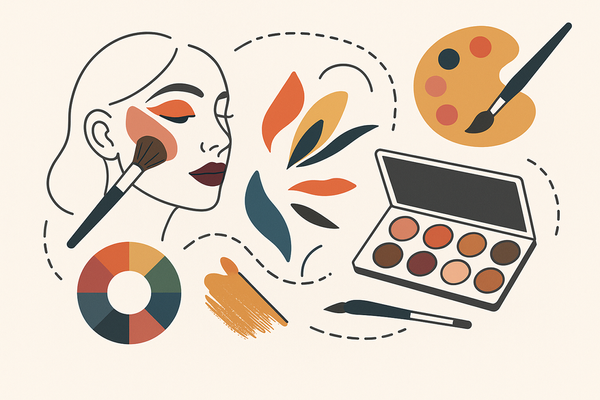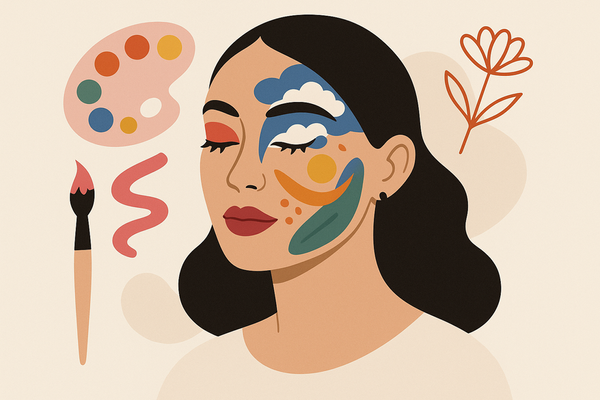The Ultimate Guide to Creative Makeup Designs
Explore creative makeup designs with key techniques, tools, and step-by-step guides to transform faces into storytelling canvases while pushing beauty boundaries.
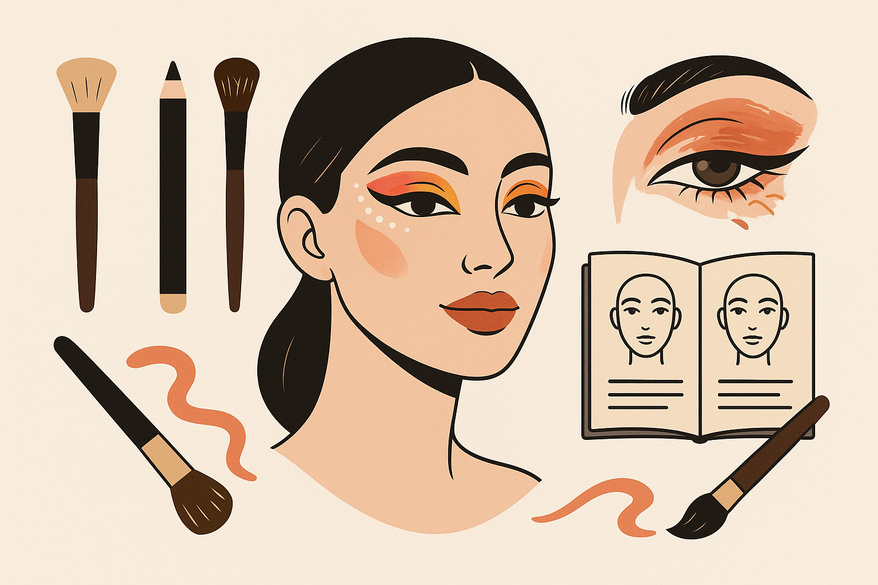
Estimated reading time: 12 minutes
Key Takeaways
- Creative makeup designs transform the face into a storytelling canvas.
- Core techniques include color blending, contouring, stenciling, highlighting, and embellishments.
- A structured, step-by-step process helps beginners build confidence.
- Seek inspiration from top artists, festivals, digital tools, and architecture.
- Overcome challenges with practice, proper products, and community feedback.
Table of Contents
- Introduction
- Section 1: Understanding Creative Makeup Designs
- Section 2: Essential Elements and Techniques
- Section 3: Step-by-Step Guide for Beginners
- Section 4: Showcasing Examples and Inspiration
- Section 5: Overcoming Challenges
- Section 6: Conclusion and Next Steps
- FAQ
Introduction
Creative makeup designs are an artistic form of cosmetic application that turns the face or body into a canvas for visual storytelling and self-expression. Unlike standard beauty routines, these designs go beyond color correcting and contouring to craft narrative-driven, striking looks. This style has surged in popularity because it empowers individuality, showcases artistic skill, and thrives on social media, fashion editorials, and performance art.
In this guide, we will:
- Define what creative makeup designs are and why they matter.
- Explore key techniques, tools, and color theory.
- Provide a step-by-step beginner process.
- Share real-world examples for inspiration.
- Offer troubleshooting tips and next steps for expanding your skills.
Our objective is to inspire and educate you on how to create bold, innovative looks that push the boundaries of traditional beauty.
Section 1: Understanding Creative Makeup Designs
What Sets Creative Makeup Designs Apart
- Visual Impact vs. Natural Enhancement – Bold shapes, vivid hues, and 3D effects instead of subtle correction.
- Experimentation and Innovation – Graphic lines, theatrical pigments, and mixed-media for eye-catching narratives.
- Storytelling Potential – Each look conveys a theme, mood, or character arc.
Importance of Innovation and Artistic Expression
- Color Theory Application – Balance complementary and analogous palettes to guide emotion.
- Composition and Balance – Treat the face like a canvas with foreground, background, and focal points.
- Mixed-Media Approaches – Combine cosmetics with craft materials for texture and depth.
Styles Overview
- Avant-Garde – Architectural shapes, extreme proportions, editorial flair.
- Themed – Nature-inspired florals, pop-culture cosplay, festival-ready rainbows.
- Experimental – Novel techniques for runway, theater, or digital videos.
Application Contexts
- Fashion shows and editorial photoshoots
- Theater productions and performance art
- Social media campaigns and influencer content
- Special events, festivals, and cosplay competitions
Section 2: Essential Elements and Techniques
Key Techniques
- Color Blending
– Seamless gradients with soft synthetic brushes and cream-to-powder pigments.
– Safety Tip: Clean brushes between colors to avoid muddy tones. - Contouring & Shading
– Sculpt planes or create fantasy silhouettes using angled brushes and sponges.
– Safety Tip: Patch-test new creams for irritation. - Highlighting
– Light-reflecting pigments for dimension with fan brushes and liquid highlighters.
– Safety Tip: Avoid glitter near the inner eye. - Stenciling & Tape
– Crisp edges and geometric patterns with makeup tape and silicone stencils.
– Safety Tip: Remove tape slowly. - Embellishments
– Gems, glitter, feathers, and prosthetics for texture.
– Safety Tip: Use medical-grade adhesive and oil-based remover. - Mixed-Media
– Incorporate fabrics, wire, sequins, or props.
– Safety Tip: Ensure materials are skin-safe.
Selecting Palettes & Products
- Mood-Driven Color Choices – Blues for calm, reds for drama, iridescent greens for otherworldly vibes.
- Texture Layering – Matte bases with metallic foils and glossy topcoats.
- Pro-Grade Recommendations – Long-wear, high-pigment, fragrance-free, dermatologically tested.
Emerging Trends & Technologies
- AI Design Apps – Create digital mockups; see Pushing Beauty Boundaries: Creative Makeup Designs with AI Makeup Generators.
- Professional Airbrush Kits – Smooth, SFX-ready finishes.
- Digital Workflows – Rapid inspiration sharing on Instagram and TikTok; for more, visit Mastering Creative Makeup Designs: Techniques, Trends & Expert Tips.
For quick digital mockups of your creative makeup, Makeup Check AI offers AI-driven previews.
Section 3: Step-by-Step Guide for Beginners
- Conceptualize
– Choose a theme and gather references.
– Limit to 3–5 core shades for cohesion. - Prep the Skin
– Cleanse, moisturize, prime for an even base. - Base Application
– Foundation, concealer, and dewy setting spray. - Shape & Color
– Sketch shapes with a white pencil; fill with brushes and sponges; define edges with stencils or tape. - Texture & Details
– Apply adhesive for gems; add glitter and gloss for drama. - Refine
– Sharpen lines with precision brushes; clean up with concealer. - Set
– Use setting spray or powder; photograph in bright light for adjustments.
Beginner Tips
- Start simple: focus on one bold element.
- Use face charts to practice.
- Draw light guidelines for symmetry.
Essential Tools List
- Quality brush set
- Makeup sponges
- Silicone stencils and tape
- Skin-safe adhesive
- High-pigment palette
Section 4: Showcasing Examples and Inspiration
Case Study: Pat McGrath
- Iconic Techniques: Bold color blocking and layered textures.
- Real-World Usage: Her runway looks illustrate elevated face art.
Festival and Editorial Examples
- Neon eyeliner frames
- Layered rhinestones with pearl pigments
- SFX prosthetics airbrushed seamlessly
Visual Descriptions
- White geometric lines over black lids
- Jewel-toned smokey eyes with metallic leaf foils
- 3D floral appliqués on cheekbones
Inspiration Sources
- Instagram, TikTok, Pinterest, specialized blogs
- Fashion weeks, theatrical performances, makeup expos
- Patterns in art, textures in nature, shapes in architecture
Section 5: Overcoming Challenges
Common Misconceptions
- “Only professionals can do it.” – Anyone can start with basic tools and regular practice.
- “It’s too time-consuming.” – Planning and stencils can streamline the process.
Technical Hurdles
- Symmetry – Mirror intricate designs on both sides.
- Smooth blending – Test product compatibility to avoid patches.
- Longevity – Manage heat and humidity to prevent smudging.
Troubleshooting Tips
- Practice on face charts before live application.
- Use a small concealer brush for spot corrections.
- Seek community feedback in makeup forums.
Professional Advice
- Choose allergy-tested adhesives and pigments.
- Document each step with photos to track progress.
Section 6: Conclusion and Next Steps
Key Takeaways
- Creative makeup designs turn the face into a storytelling canvas.
- Master techniques: blending, contouring, embellishing, and mixed-media.
- Follow a structured process to build confidence.
- Draw inspiration from diverse sources.
- Overcome challenges with practice and peer feedback.
Next Steps
- Experiment daily with quick creative sketches.
- Share your work with hashtags and join makeup challenges.
- Explore online courses, YouTube channels, specialized blogs, and local workshops.
Ready to unleash your inner artist? Start creating your signature looks today and join the global movement of expressive, boundary-pushing makeup artistry.
FAQ
- What basic tools do I need to start?
Begin with quality brushes, sponges, stencils, skin-safe adhesive, and a high-pigment palette. - How can I practice designs without applying them to my face?
Use face charts or paper sketches to refine ideas first. - How do I prevent smudging under hot lights?
Set your work with long-wear products and a final setting spray or powder. - Where can I find inspiration?
Browse platforms like Instagram, TikTok, Pinterest, and attend makeup expos or fashion events. - Are there safety precautions I should follow?
Always patch-test products, use medical-grade adhesives, and avoid placing glitter too close to the eye.

